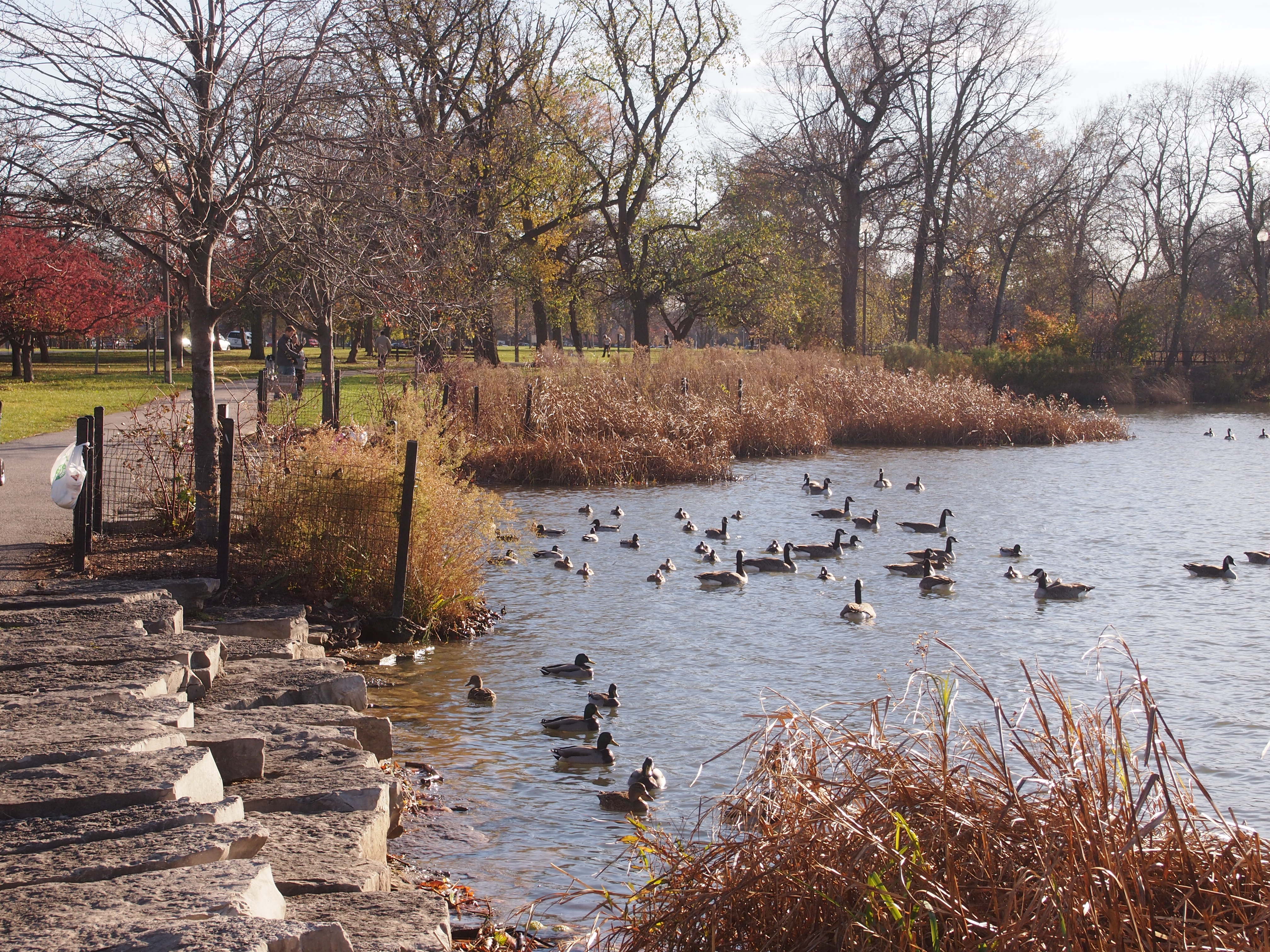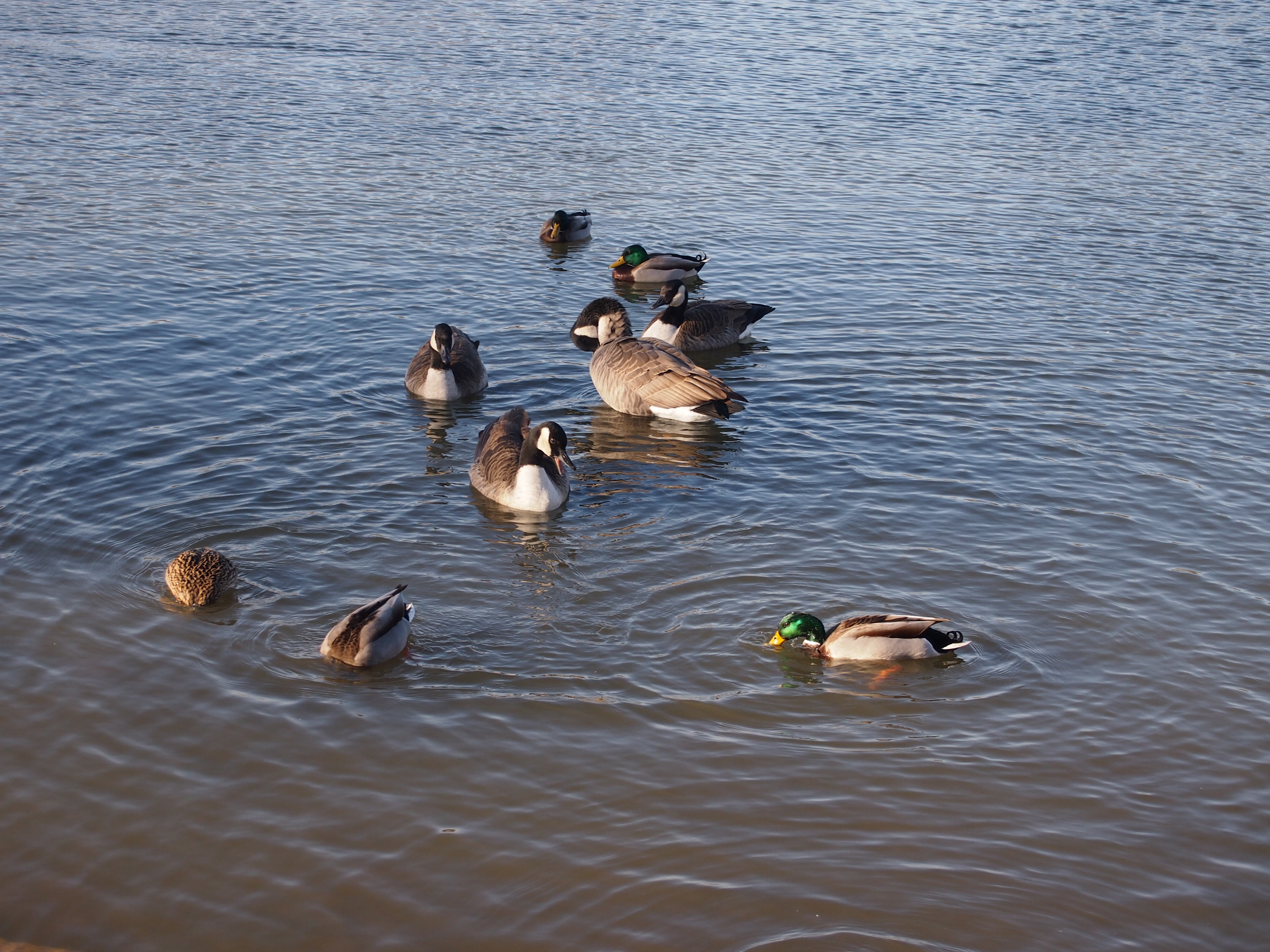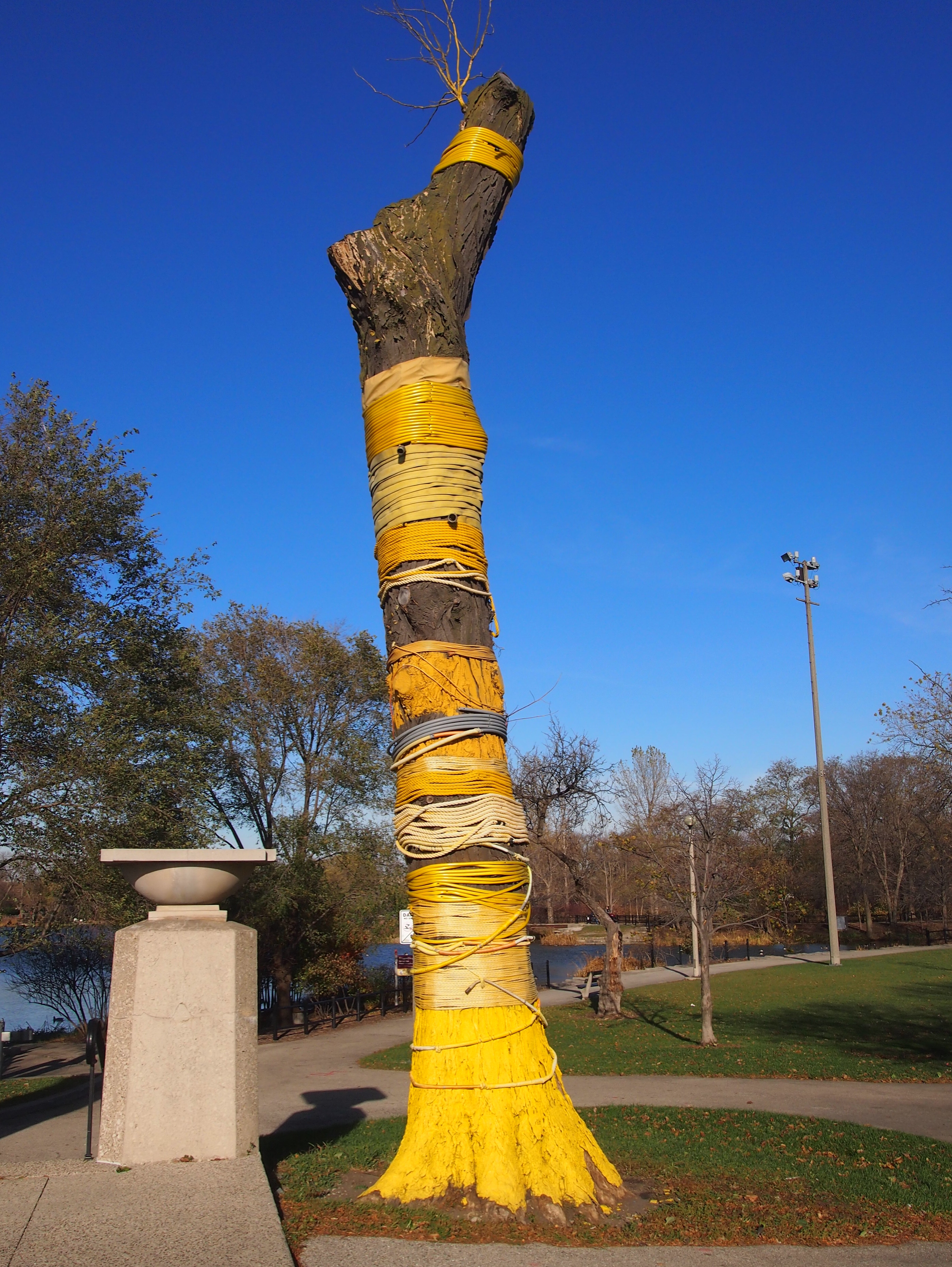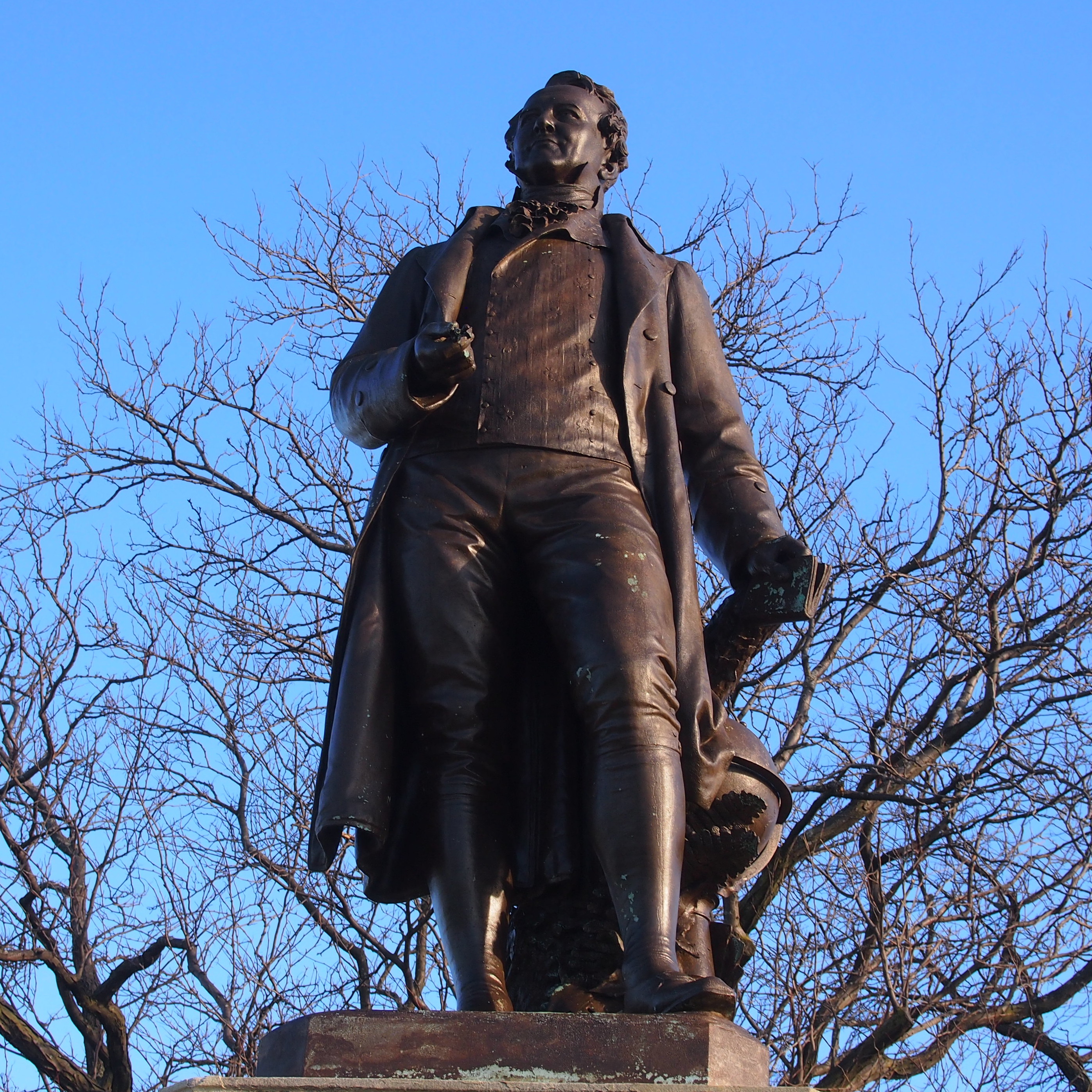Another place we went on Saturday — which I suspect will be the last warm Saturday of the year — was Humboldt Park, one of Chicago’s major parks. The last time I was there, summer was ending, but it was still summer. In mid-November, the park’s a different place, one of autumnal gray and brown and smidgens of green.
 There are still a lot of birds around. Ducks and geese mostly, still foraging in the unfrozen waters.
There are still a lot of birds around. Ducks and geese mostly, still foraging in the unfrozen waters.
 Near the park’s Boat House is a dead tree refashioned into artwork: “Burst” by Mia Capodilupo (2014). A ex-locust tree plus hose, rope, extension cord, and fabric.
Near the park’s Boat House is a dead tree refashioned into artwork: “Burst” by Mia Capodilupo (2014). A ex-locust tree plus hose, rope, extension cord, and fabric.
 According to WTTW, it’s one of a number of such transformations citywide: “The Chicago Park District has teamed with a local sculptor’s group to turn trees that were condemned into public art. The stay of execution for the mighty elms, ash and locust trees is also an opportunity for artists to make a very public impression.”
According to WTTW, it’s one of a number of such transformations citywide: “The Chicago Park District has teamed with a local sculptor’s group to turn trees that were condemned into public art. The stay of execution for the mighty elms, ash and locust trees is also an opportunity for artists to make a very public impression.”
Not far from “Burst” is a more traditional kind of park art, a statue of explorer Friedrich Wilhelm Heinrich Alexander von Humboldt. I saw it last year but couldn’t make an image.
 Note the globe behind him. There’s an iguana back there, too. WBEZ reports: “[Humboldt Park] was laid out in 1869. The statue arrived in 1892, the work of Felix Görling. It was paid for by German-born brewer Francis Dewes, who was also responsible for a flamboyant mansion on Wrightwood Avenue.
Note the globe behind him. There’s an iguana back there, too. WBEZ reports: “[Humboldt Park] was laid out in 1869. The statue arrived in 1892, the work of Felix Görling. It was paid for by German-born brewer Francis Dewes, who was also responsible for a flamboyant mansion on Wrightwood Avenue.
“When the statue was erected, the neighborhood around it was heavily German. The Poles later settled in, and for many years Humboldt Park was the site of the Polish Constitution Day Parade. Then the Poles moved on and were succeeded by the Puerto Ricans… One of the park’s roadways is now named for Luis Munoz Marin — the first elected governor of Puerto Rico.”